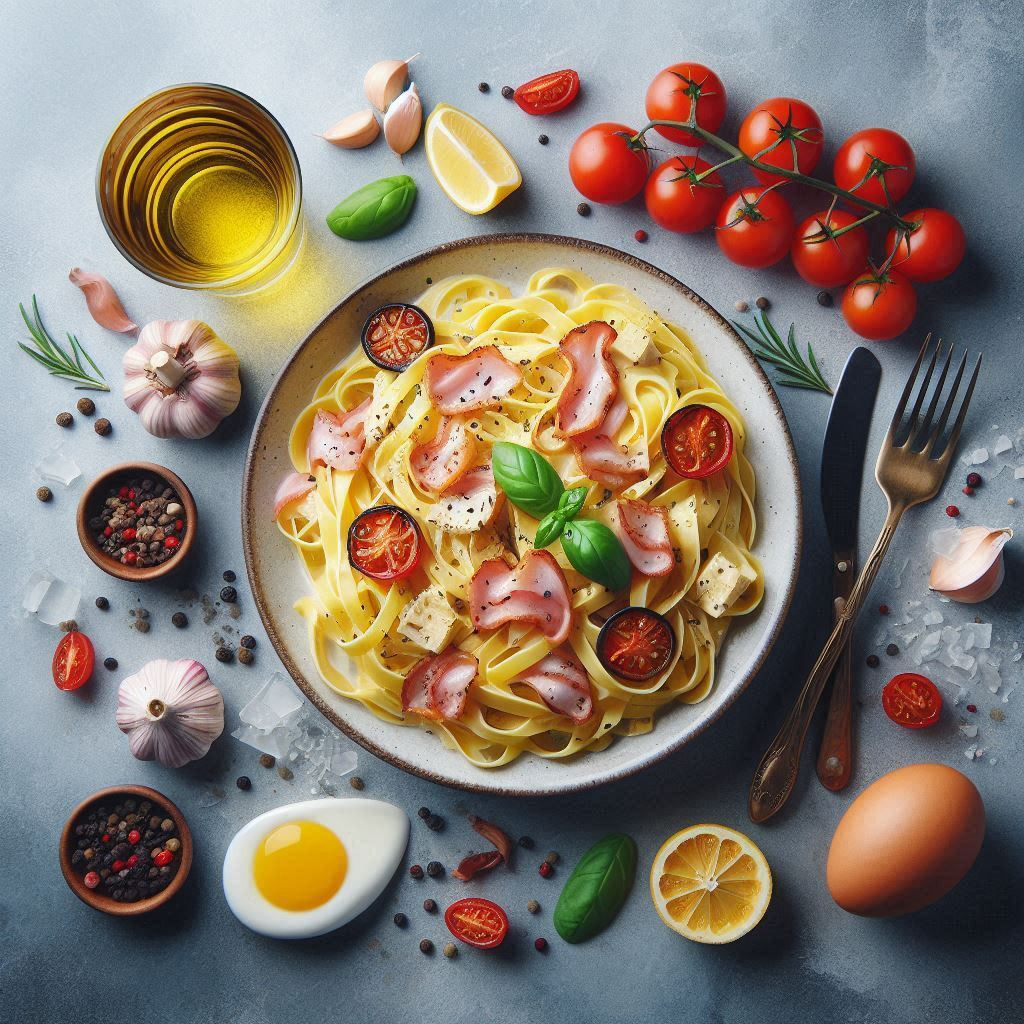
A Journey Through Time: The Story of Fettuccine Carbonara
Fettuccine Carbonara, a dish that embodies the simplicity and deliciousness of Italian cuisine, is more than just pasta and eggs. Its history is a captivating journey through time, interwoven with the stories of shepherds, miners, and the evolution of culinary traditions.
Origins: A Tale of Shepherds and Miners
The exact origin of Carbonara remains shrouded in mystery, but most food historians agree that it likely emerged in the 19th century in the central Italian region of Lazio, specifically in the areas surrounding Rome.
One popular theory traces its roots to the shepherds of the Apennine Mountains. These hardy individuals, often living in remote areas, relied on simple, readily available ingredients. They would use guanciale, cured pork jowl, and eggs from their flocks, along with black pepper and cheese – ingredients that were easily transported and stored.
Another theory suggests that Carbonara originated in the coal mining communities of Lazio. The miners, working in harsh conditions, needed a hearty and nourishing meal. The dish’s simple ingredients, rich in protein and fat, provided the necessary sustenance.
The Evolution of a Classic
While the exact origins remain debated, it’s clear that Carbonara evolved over time, influenced by various factors. The use of pancetta, a cured pork belly, became increasingly common, possibly due to its wider availability.
The addition of Pecorino Romano, a hard sheep’s milk cheese, also contributed to the dish’s distinctive flavor profile. This cheese, traditionally produced in the region, provided a salty and sharp counterpoint to the richness of the other ingredients.
The “Golden Era” of Carbonara
The 1950s marked a turning point for Carbonara. The dish gained immense popularity in Rome and beyond, becoming a symbol of Italian culinary excellence. This period saw the standardization of the recipe, with the use of specific ingredients and cooking techniques becoming more widely accepted.
A Culinary Masterpiece: The Art of Preparation
Fettuccine Carbonara is a dish that celebrates the simplicity and purity of its ingredients. Its preparation is a delicate dance, requiring precision and care to achieve the perfect balance of flavors and textures.
Ingredients:
- Fettuccine: Long, flat pasta noodles, traditionally made with durum wheat semolina and water.
- Guanciale or Pancetta: Cured pork jowl or belly, diced or sliced.
- Eggs: Fresh, high-quality eggs, preferably at room temperature.
- Pecorino Romano Cheese: Hard, salty sheep’s milk cheese, grated.
- Black Pepper: Freshly ground black peppercorns.
- Salt: To taste.
Preparation:
- Cook the Fettuccine: Bring a large pot of salted water to a boil. Add the fettuccine and cook according to package directions, until al dente.
- Prepare the Guanciale or Pancetta: While the pasta is cooking, render the guanciale or pancetta in a large skillet over medium heat. Cook until crispy and golden brown, then remove from the pan and set aside. Leave the rendered fat in the pan.
- Whisk the Eggs: In a large bowl, whisk together the eggs, Pecorino Romano cheese, and black pepper. Season with salt to taste.
- Combine the Ingredients: Drain the fettuccine, reserving a cup of the pasta water. Add the cooked pasta to the skillet with the rendered fat. Toss to coat.
- Create the Sauce: Slowly pour the egg mixture into the pasta, whisking constantly. The heat from the pasta will cook the eggs, creating a creamy sauce. If the sauce is too thick, add a little of the reserved pasta water.
- Serve: Toss the pasta with the crispy guanciale or pancetta. Serve immediately, garnished with additional Pecorino Romano cheese and freshly ground black pepper.
Tips for the Perfect Carbonara:
- Use high-quality ingredients: The quality of the ingredients will significantly impact the flavor of the dish.
- Don’t overcook the pasta: Al dente pasta is essential for a good Carbonara.
- Cook the eggs slowly: Add the egg mixture gradually, whisking constantly, to avoid scrambling the eggs.
- Don’t stir too much: Over-mixing the sauce will make it tough and rubbery.
- Serve immediately: Carbonara is best enjoyed fresh, as the sauce will thicken as it sits.
A Culinary Legacy:
Fettuccine Carbonara is a testament to the enduring power of simple, yet exquisite, cuisine. Its history, a blend of practicality and culinary artistry, continues to inspire generations of cooks and food lovers. The dish remains a beloved classic, a symbol of Italian culinary heritage and a timeless reminder of the beauty of simple flavors.



